-
Color Physics @Hampshire, Day 7
On Day 7, we finally got to understand what electromagnetic waves are.
- Students used a wonderful HTML-based simulation of a radiating charge to explore how motion of an electrically charged particle affects its electric field lines. They wrote their observations, the key ones which we discussed as a class.
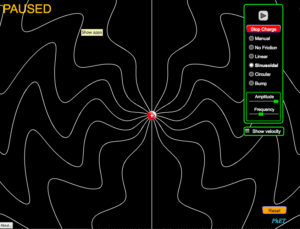
A screenshot of the PhET simulation of an oscillating electric charge and its electric field. - After briefly talking about the creation of magnetic field by a changing electric field and vice versa (mostly in a hand-wavy way), we moved on to the more familiar representation of the electromagnetic wave far away from wiggling charged particle. For this we used a very nice Java simulation developed by Juan M. Aguirregabiria, the screenshot of which is shown below. The shift inspired a good discussion of the pros and cons of the two visual representations of the electric field (arrows and field lines) and the relation between the depictions of electromagnetic radiation in the two simulations.
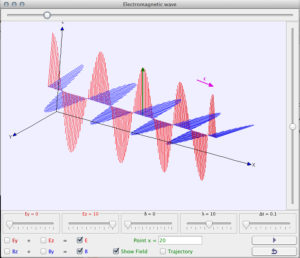 A screenshot of a simulation of a plane electromagnetic wave.
A screenshot of a simulation of a plane electromagnetic wave.- After discussing different types of electromagnetic radiation (UV, visible light, WiFi, microwave) and its effects and uses, we began discussing what it takes to make a wave in general.
- Students used a wonderful HTML-based simulation of a radiating charge to explore how motion of an electrically charged particle affects its electric field lines. They wrote their observations, the key ones which we discussed as a class.
-
Color Physics @Hampshire, Day 3
Topics
- Saturation, hue, and brightness
- Additive Color Mixing
We started Day 3 by playing with the HSB sliders on a computer software to determine which properties of perceived color are referred to as hue, saturation, and brightness.
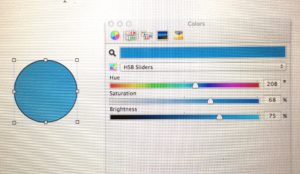
Playing with Hue, Saturation, and Brightness sliders to find out how they affect the color After using the hand-held spectrometers to investigate the spectrum of a computer screen, cellphone screens, and the video projector, students made predictions about how brightness, saturation, and hue may be affected by mixing different amounts of red, green, and blue light and tested their predictions using primary color light sticks.
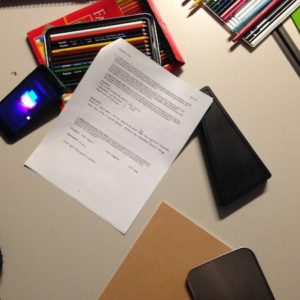
Making a prediction about color mixing and testing them. 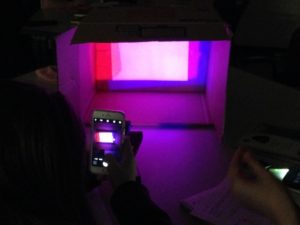
Mixing light with primary colors and investigating how digital images recored by a cellphone differ from what is seen by the naked eye.